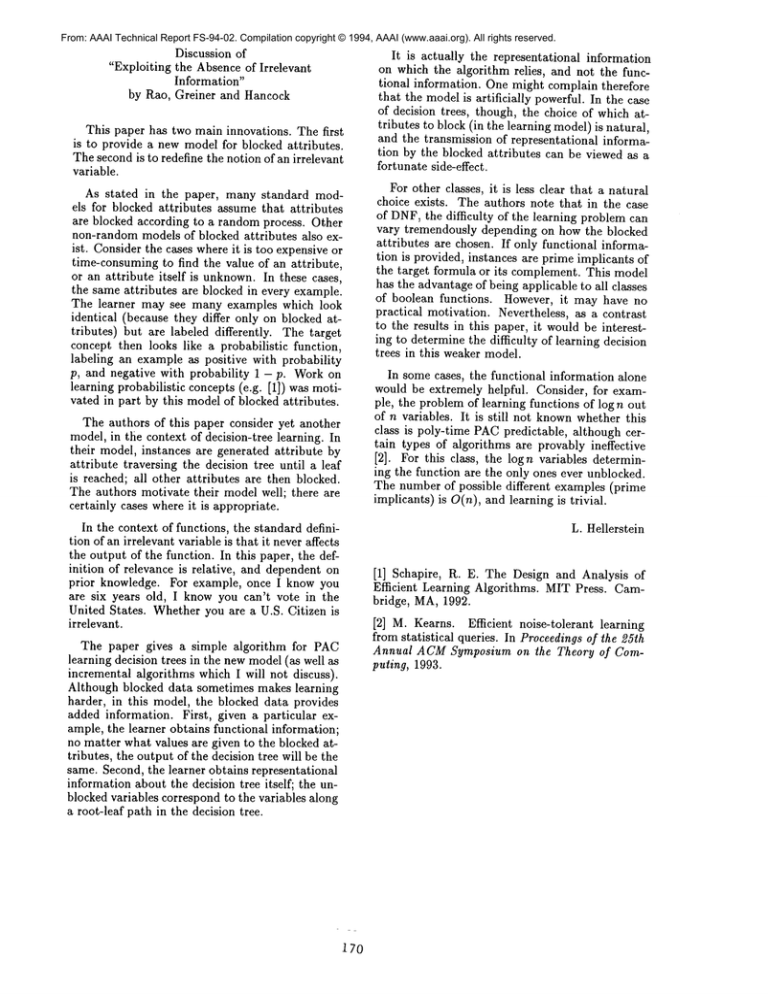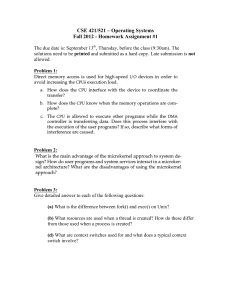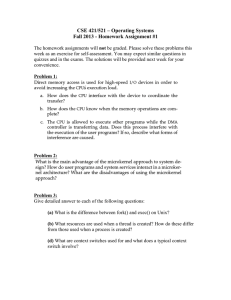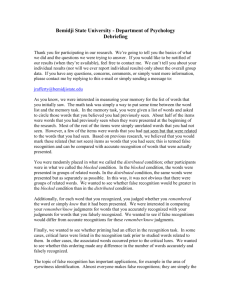
From: AAAI Technical Report FS-94-02. Compilation copyright © 1994, AAAI (www.aaai.org). All rights reserved.
Discussion of
"Exploiting the Absence of Irrelevant
Information"
by Rao, Greiner and Hancock
It is actually the representational information
on which the algorithm relies, and not the functional information. One might complain therefore
that the modelis artificially powerful. In the case
of decision trees, though, the choice of which attributes to block (in the learning model) is natural,
and the transmission of representational information by the blocked attributes can be viewed as a
fortunate side-effect.
This paper has two main innovations. The first
is to provide a new model for blocked attributes.
The secondis to redefine the notion of an irrelevant
variable.
As stated in the paper, many standard models for blocked attributes assume that attributes
are blocked according to a random process. Other
non-random models of blocked attributes also exist. Consider the cases where it is too expensive or
time-consuming to find the value of an attribute,
or an attribute itself is unknown.In these cases,
the same attributes are blocked in every example.
The learner may see many examples which look
identical (because they differ only on blocked attributes) but are labeled differently. The target
concept then looks like a probabilistic function,
labeling an example as positive with probability
p, and negative with probability 1 -p. Work on
learning probabilistic concepts (e.g. [1]) was motivated in part by this model of blocked attributes.
The authors of this paper consider yet another
model, in the context of decision-tree learning. In
their model, instances are generated attribute by
attribute traversing the decision tree until a leaf
is reached; all other attributes are then blocked.
The authors motivate their model well; there are
certainly cases where it is appropriate.
In the context of functions, the standard definition of an irrelevant variable is that it never affects
the output of the function. In this paper, the definition of relevance is relative, and dependent on
prior knowledge. For example, once I know you
are six years old, I know you can’t vote in the
United States. Whether you are a U.S. Citizen is
irrelevant.
For other classes, it is less clear that a natural
choice exists. The authors note that in the case
of DNF,the difficulty of the learning problem can
vary tremendously depending on how the blocked
attributes are chosen. If only functional information is provided, instances are prime implicants of
the target formula or its complement. This model
has the advantage of being applicable to all classes
of boolean functions. However, it may have no
practical motivation. Nevertheless, as a contrast
to the results in this paper, it wouldbe interesting to determine the difficulty of learning decision
trees in this weaker model.
In some cases, the functional information alone
would be extremely helpful. Consider, for example, the problem of learning functions of log n out
of n variables. It is still not knownwhether this
class is poly-time PACpredictable, although certain types of algorithms are provably ineffective
[2]. For this class, the log n variables determining the function are the only ones ever unblocked.
The number of possible different examples (prime
implicants) is O(n), and learning is trivial.
L. Hellerstein
[1] Schapire, R. E. The Design and Analysis of
Efficient Learning Algorithms. MIT Press. Cambridge, MA,1992.
The paper gives a simple algorithm for PAC
learning decision trees in the new model(as well as
incremental algorithms which I will not discuss).
Although blocked data sometimes makes learning
harder, in this model, the blocked data provides
added information. First, given a particular example, the learner obtains functional information;
no matter what values are given to the blocked attributes, the output of the decision tree will be the
same. Second, the learner obtains representational
information about the decision tree itself; the unblocked variables correspond to the variables along
a root-leaf path in the decision tree.
170
[2] M. Kearns. Efficient noise-tolerant learning
from statistical queries. In Proceedings of the 25th
Annual ACMSymposium on the Theory of Computing, 1993.






